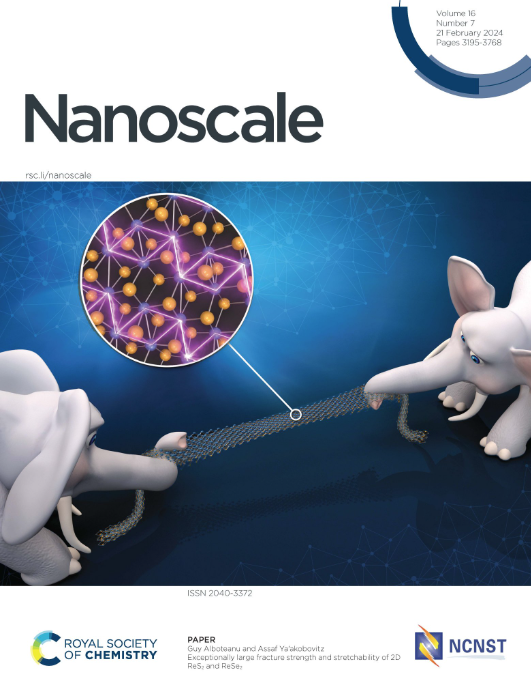Nanophotonics of mid-infrared plasmon-polaritons in interfaces between metals and two-dimensional crystals
IF 5.8
3区 材料科学
Q1 CHEMISTRY, MULTIDISCIPLINARY
引用次数: 0
Abstract
The optical response of metal/dielectric interfaces is largely influenced by surface plasmon-polariton (SPP) modes. In the mid-infrared (IR) range, SPPs can probe inner physicochemical properties of metal/dielectric systems, including interfaces with mid-IR polaritonic 2D crystals. Using advanced nanoscopy techniques, we characterize mid-IR SPP modes in air/gold and hexagonal boron nitride (hBN) 2D crystal/gold interfaces via synchrotron infrared nanospectroscopy (SINS) and scattering-scanning near fied optical microscopy (s-SNOM) imaging. SPPs in these systems show micrometer-sized wavelengths and propagation lengths over 20 micrometers at room temperature. In hBN/Au, both SPPs and hyperbolic phonon polaritons (HPhPs) coexist, creating a SPP-HPhP wave superposition. The experimental momentum and damping of the SPP waves are determined from the s-SNOM imaging and the SINS spatio-spectral linescan. Thereby, we retrieve the experimental frequency-momentum dispersion relation, presenting excellent agreement with theory. Furthermore, we characterize an anti-crossing of the SPP dispersion near the in-plane transverse optical phonon frequency of hBN, indicating that SPP modes and phonon form a coupled system interacting in the strong coupling regime. Such kind of interaction with phonons can be further explored to enhance the sensibility of mid-IR nanospectroscopy techniques.金属与二维晶体界面中红外等离子体极化子的纳米光子学
金属/介质界面的光学响应很大程度上受表面等离子体-极化子(SPP)模式的影响。在中红外(IR)范围内,SPPs可以探测金属/介电系统的内部物理化学性质,包括与中红外偏振二维晶体的界面。利用先进的纳米技术,我们通过同步红外纳米光谱(SINS)和散射扫描近场光学显微镜(s-SNOM)成像,表征了空气/金和六方氮化硼(hBN)二维晶体/金界面的中红外SPP模式。这些系统中的spp显示微米大小的波长和在室温下超过20微米的传播长度。在hBN/Au中,SPPs和双曲声子极化子(HPhPs)共存,形成SPP-HPhP波叠加。利用s-SNOM成像和捷联惯导空间谱线扫描确定了SPP波的实验动量和阻尼。由此,我们恢复了实验频率-动量色散关系,与理论有很好的一致性。此外,我们在hBN的平面内横向光学声子频率附近表征了SPP色散的反交叉,表明SPP模式和声子形成了一个在强耦合域中相互作用的耦合系统。这种与声子的相互作用可以进一步探索,以提高中红外纳米光谱技术的灵敏度。
本文章由计算机程序翻译,如有差异,请以英文原文为准。
求助全文
约1分钟内获得全文
求助全文
来源期刊

Nanoscale
CHEMISTRY, MULTIDISCIPLINARY-NANOSCIENCE & NANOTECHNOLOGY
CiteScore
12.10
自引率
3.00%
发文量
1628
审稿时长
1.6 months
期刊介绍:
Nanoscale is a high-impact international journal, publishing high-quality research across nanoscience and nanotechnology. Nanoscale publishes a full mix of research articles on experimental and theoretical work, including reviews, communications, and full papers.Highly interdisciplinary, this journal appeals to scientists, researchers and professionals interested in nanoscience and nanotechnology, quantum materials and quantum technology, including the areas of physics, chemistry, biology, medicine, materials, energy/environment, information technology, detection science, healthcare and drug discovery, and electronics.
 求助内容:
求助内容: 应助结果提醒方式:
应助结果提醒方式:


